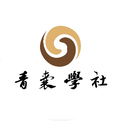
Astragalus was first recorded for medicinal use in the “Fifty-Two Diseases Formulas”. Due to the varying accounts in historical materia medica regarding its origin, variety, appearance, efficacy, and even cultural anecdotes, it has not only been properly named but has also acquired various aliases.
The proper name for Astragalus is quite clear, referred to as “Huang Qi” or “Huang Qi”. The “Shennong Bencao Jing” first recorded the name “Huang Qi”, with Li Shizhen explaining its name as: “Qi means long, and Huang Qi is yellow in color, being the foremost among tonics, hence the name.”
From the “Shennong Bencao Jing” until the Qing dynasty’s “Bencao Shuguo Yuan”, the herb was consistently referred to as “Huang Qi”. It was not until Qing scholar Yang Shitai noted in “Bencao Shuguo Yuan” that “Huang Qi is also called Qi, harvested in August…” that the dual naming of “Huang Qi” and “Huang Qi” emerged. This situation continued until the 1963 edition of the Chinese Pharmacopoeia, which first officially recorded “Huang Qi” as the proper name, and subsequent editions have consistently used “Huang Qi” as well.
Today, “Qi” is often abbreviated to “Qi”, with “Qi” being the source of “Qi”, maintaining a continuous lineage from ancient to modern times. Astragalus has many aliases, derived from both classical and modern literature, based on its origin, morphological characteristics, and customary usage.
Named by origin: The materia medica records include Xianzhou Huang Qi, Baishui Qi, Chishui Qi, and Mian Qi.
Named by morphological characteristics: Astragalus has names based on its characteristics such as Mian Qi (or Mian Qi), Chai Qi, Jian Qi, Du Gen, and Er Ren Tai.
Based on customary usage: “Dai Shan” (from “Shennong Bencao Jing”), “Dai Shen, Du Shen, Yi Zhi, Bai Ben” (from “Ming Yi Bie Lu”), “Wang Sun” (from “Yao Xing Lun”), and “Bai Yao Mian” (from Hou Ningji’s “Yao Pu”) are some of the historical aliases that are now rarely used.
Properties and Taste
The “Shennong Bencao Jing” states: “It has a sweet taste and a warm nature, primarily entering the Spleen and Lung meridians.”
The “Yao Xing Fu” states: “Sweet in taste, warm in qi, non-toxic.”
The “Tang Ye Bencao” states: “Warm in qi, sweet in taste, purely yang. Sweet and slightly warm, neutral in nature, non-toxic.”
The “Yao Xing Jie” states: “Sweet in taste, slightly warm in nature, non-toxic, enters the Lung and Spleen meridians.”
The “Jing Yue Quan Shu” states: “Sweet in taste, neutral in qi, both qi and taste are light, ascending more and descending less, slightly yin among yang.”
The “Bencao Xin Bian” states: “Sweet in taste, slightly warm in qi, thin in qi but thick in taste, can ascend or descend, the purest of yang. Non-toxic, specifically tonifies qi. Enters the Hand Taiyin, Foot Taiyin, and Hand Shaoyin meridians.”
In summary, Astragalus is sweet, slightly warm, and enters the Spleen and Lung meridians.
Processing
Historical materia medica records indicate that Astragalus is harvested in spring and autumn, removing the root hairs and the top, which is consistent with the 2020 edition of the “Chinese Pharmacopoeia”. However, there are numerous records regarding the processing of Astragalus, primarily using honey, with different processing methods depending on the desired effects.
The earliest record of processing Astragalus dates back to the Han dynasty’s “Jin Kui Yao Lue”, which states: “Remove the top.” Subsequently, the “Lei Gong Pao Zhi Lun” recorded the removal of the wrinkled skin from the top, steaming for half a day, and cutting. The “Taiping Huimin Heji Ju Fang” not only records cleansing, steaming, and cutting but also introduces honey and salt processing methods. The most commonly used modern method for Astragalus is honey-frying, but domestic scholars have verified that the ancient frying method differs from the modern one, primarily meaning “roasting”. The method of “honey-water stir-frying” that appeared in Southern Song dynasty texts is closer to the modern honey-frying method. At the same time, there were also methods involving honey steaming, salt roasting, salt soup soaking, salt water steaming, and salt water frying.
During the Yuan, Ming, and Qing dynasties, additional methods such as wine soaking, wine frying, ginger juice processing, and rice wash soaking and frying were gradually introduced. However, overall, raw and honey-fried Astragalus are the most widely used. Currently, most other processing methods for Astragalus have been eliminated, with raw Astragalus being the primary form, and the only remaining processed form is honey-fried, which is the ancient “honey-frying” method. Traditional Chinese medicine theory holds that raw Astragalus is adept at stabilizing the exterior, stopping sweating, promoting urination, reducing swelling, and expelling toxins and pus, while honey-fried Astragalus is sweet, warm, and moistening, excelling in tonifying qi and nourishing the center.
Modern research indicates that the phospholipid components of Astragalus are unstable and easily decompose when heated. After honey-frying, the total phospholipid content of Astragalus decreases, as do the levels of amino acids and astragaloside, while the polysaccharide content increases. The hydrolysis of deacetylated glycosides in fried Astragalus may be the reason for the enhanced qi-tonifying effects of honey-fried Astragalus.
Although honey-frying can enhance its tonifying effects, raw Astragalus remains the mainstream in clinical practice.
Astragalus has over 30 traditional processing methods, including dry frying, honey-frying, wine-frying, salt-frying, bran frying, and rice frying. The medicinal properties of Astragalus vary with different processing methods. Honey-frying primarily serves to moderate the herb’s properties, enhance its qi-tonifying and spleen-nourishing effects, and warm the lungs and moisten the intestines; wine-frying can promote upward movement of the herb, invigorate blood circulation, and is mainly used for limb numbness and joint pain; rice-frying can enhance spleen-nourishing and appetite-stimulating effects; and salt-frying enters the Kidney meridian, promoting downward movement of the herb and enhancing its yin-nourishing and fire-reducing effects.
Efficacy
The “Fifty-Two Diseases Formulas” is currently the earliest known text recording the treatment of diseases with Astragalus, stating: “Astragalus treats carbuncles, and for flesh carbuncles, it should be used in double dosage,” indicating that Astragalus was already in clinical use as early as the pre-Qin period.
The “Shennong Bencao Jing” lists Astragalus as a superior herb, stating: “It has a sweet and slightly warm taste, primarily treating long-standing sores and carbuncles, expelling pus and relieving pain, wind disorders, dysentery, five types of hemorrhoids, mouse fistula, tonifying deficiency, and all diseases in children.” Later materia medica often cites this, gradually expanding its efficacy and treatment scope.
The “Ming Yi Bie Lu” adds the effects of “treating women’s wind evil in the child palace”, “expelling evil blood from the five organs”, “stopping thirst”, “tonifying qi”, and “benefiting yin qi”.
During the Tang and Five Dynasties, the materia medica largely continued the discussions on the efficacy and treatment of Astragalus from previous texts, while adding treatments for “back pain”, “deficiency cough”, “deafness”, “treating cold and heat”, “tonifying blood”, “intestinal wind”, “blood collapse, leukorrhea”, “all diseases before and after childbirth, irregular menstruation”, “phlegm cough”, and “treating head wind and heat toxin red eyes”, marking the most significant additions in history, particularly in the treatment of gynecological diseases, and first mentioning the idea of Astragalus as a “blood tonic”, which has had a certain influence on later materia medica.
The Song, Jin, and Yuan dynasties were important periods for the rapid development of traditional Chinese medicine, with many schools of thought emerging. During these periods, the materia medica extensively discussed the medicinal properties of Astragalus, concluding that it is a “medication for the upper, middle, and lower parts, both internal and external, and for the three burners”, and proposed the view that Astragalus treats “spleen and stomach deficiency”, “various pains”, “tonifying the three burners, strengthening the defensive qi”, and “treating coughing up blood”.
Existing ancient materia medica, especially from the Ming and Qing dynasties, contains the most discussions on the functions and treatments of Astragalus, proposing that Astragalus treats “alcoholic jaundice”, “constipation in the elderly”, “yin sweating and itching”, “promoting muscle growth and closing wounds”, “greatly stopping sweating, while raw can also induce sweating”.
Research has found that the Qing dynasty has the most extensive discussions on the medicinal properties and functions of Astragalus, but few new clinical applications for Astragalus have been proposed, with the in-depth exploration, analysis, and correction of Astragalus’s medicinal properties being the greatest feature of this period.
Astragalus has the effects of tonifying qi and raising yang, stabilizing the exterior and stopping sweating, promoting urination and reducing swelling, generating fluids and nourishing blood, relieving stagnation and unblocking collaterals, expelling toxins and pus, and promoting wound healing and muscle growth, and is known as the “holy medicine for sores and carbuncles”.
Tonifying Qi and Raising Yang
Zhang Yuanshu in his “Zhen Zhu Nang” states: “It benefits the stomach qi, dispels muscle heat, and is used for various pains.” The “Yao Xing Fu” records: “It warms the flesh and solidifies the pores, benefits the original qi and tonifies the three burners.” Jia Jiuru’s “Yao Pin Hua Yi” states: “Its warm nature can raise yang, and its sweet and bland taste, when honey-fried, can also warm the center, primarily benefiting the spleen… it tonifies the lungs, thus dispersing the defensive qi… for those with weak skin and unable to break out in rashes, it is advisable to use it raw first to assist qi at the surface.” Chen Shiduo’s “Bencao Xin Bian” states: “It specifically tonifies qi.”
Stabilizing the Exterior and Stopping Sweating
Zhang Yuanshu’s “Yong Yao Xin Fa” states: “It tonifies the five organs’ deficiencies, dispels yin fire, and removes empty heat; if there is no sweating, it can induce it; if there is sweating, it can stop it.” The “Yao Xing Fu” states: “It warms the flesh and solidifies the pores… it stabilizes the exterior against spontaneous sweating.” Chen Jiayou’s “Bencao Meng Quan” states: “It warms the flesh and fills the skin, nourishing the pores to control opening and closing. It stabilizes spontaneous sweating and night sweats; if there is no sweating, it can induce it; if there is sweating, it can stop it.” The “Bencao Bei Yao” states: “It tonifies qi, stabilizes the exterior, dispels fire, and when used raw, stabilizes the exterior; if there is no sweating, it can induce it; if there is sweating, it can stop it.” The Qing dynasty’s “Gu Jin Ming Yi Fang Lun” states: “Only Astragalus can tonify the three burners and solidify the defensive qi, being the key to resisting wind, and it can induce sweating if there is none, and stop it if there is, having effects similar to Gui Zhi.”
Promoting Urination and Reducing Swelling
Zhang Yuanyu in his “Changsha Yao Jie” states: “It enters the Lung and Stomach to tonify qi, travels through the meridians to benefit the nutrients, treating yellow sweat and blood stasis, and is most effective for skin water and wind dampness diseases, and for joint swelling and pain.” The Qing dynasty’s Zhang Xichun in “Yixue Zhongzhong Canxi Lu” states: “For those with difficulty urinating and swelling, it can be used to promote urination.”
Generating Fluids and Nourishing Blood
The “Ming Yi Bie Lu” states: “It stops thirst.” The “Rihua Zizhu Bencao” states: “It nourishes blood… (treats) blood collapse… irregular menstruation, and thirst.” Miao Xiyong’s “Shennong Bencao Jing Shu” states: “Sweet can nourish blood… when qi is abundant, fluids are generated, hence it stops thirst.” Physician Zhang Jingyue in “Wai Ke Zheng Zong” states: “The reason it treats blood collapse and blood lin is that it stabilizes qi, and blood will naturally stop, hence it is said to benefit blood loss and tonify qi.”
Relieving Stagnation and Unblocking Collaterals
Zhang Yuanshu in his “Yao Lei Fa Xiang” states: “(It treats) sores and ulcers with blood vessels not flowing.” Xu Yanchun in “Bencao Fahui” states: “(It is good for) blood vessels not flowing.” The Qing dynasty’s Zhang Lu in “Beng Jing Feng Yuan” states: “Although its nature is warm and tonifying, it can also regulate blood vessels, allowing for smooth flow in the meridians, without hindrance from stagnation.”
Expelling Toxins and Pus, Promoting Wound Healing and Muscle Growth
The “Fifty-Two Diseases Formulas” states: “Astragalus treats carbuncles, and for flesh carbuncles, it should be used in double dosage.” The “Shennong Bencao Jing” states: “It primarily treats long-standing sores and carbuncles, expelling pus and relieving pain.” Du Wenxiu in his “Yao Jian” states: “It internally expels pus from yin syndromes… for carbuncles that have already ruptured, it is often used to expel toxins from within. It can also promote muscle growth and close wounds, thus tonifying the exterior.” Ni Zhumo in “Bencao Hui Yan” states: “For carbuncles, if pus and blood have ruptured, and yang qi is deficient and unable to close, Astragalus can promote muscle growth; if yin sores cannot erupt, and yang qi is deficient and unhealed, Astragalus can also promote muscle growth.” Wang Ang’s “Bencao Bei Yao” states: “It generates blood and muscle, expels pus internally, and is the holy medicine for sores and carbuncles. For cases of smallpox that do not erupt, and where yang is deficient and there is no heat, it is advisable to use it.”

He Tu Medical Theory and Formulas System Collection
Welcome to exchange, consult, and discuss
Recommended Reading
The Truth of Medicine | Plantago and Plantago SeedsThe Truth of Medicine | Mu Xiang, Chen Xiang, Qing Mu Xiang, Wu YaoThe Truth of Medicine | Ba Jitian, Yin Yang Huo, Xian MaoThe Truth of Medicine | Yuan Zhi, Chang Pu, Jiu Jie Chang PuThe Truth of Medicine | Frankincense, MyrrhThe Truth of Medicine | Allium Macrostemon (Small Garlic, Jiao Tou) and Onion, Leek, and GarlicThe Truth of Medicine | Cistanche, SuoyangThe Truth of Medicine | Sha Yuan Ji Li (Sha Yuan Zi), Ci Ji LiThe Truth of Medicine | White Silkworm, Silkworm SandThe Truth of Medicine | Duckweed, Cicada SloughThe Truth of Medicine | Achyranthes, Huai Niu Xi, Chuan Niu XiThe Truth of Medicine | Peony, White Peony, Red PeonyThe Truth of Medicine | Huang Jing, Yu ZhuThe Truth of Medicine | Bai Zhi, Xi XinThe Truth of Medicine | Sour Jujube Seed, Bai Zi Ren, Ce Bai YeThe Truth of Medicine | Rehmannia, Sheng Di Huang, Shu Di Huang, Xian Di HuangThe Truth of Medicine | Lily, Lotus Leaf, Lotus Seed, Lotus Seed Heart, Lotus Node, Lotus HairThe Truth of Medicine | Honeysuckle, LoniceraThe Truth of Medicine | Peach Kernel, Apricot Kernel, Yu Li RenThe Truth of Medicine | Gastrodia (Red Arrow), UncariaThe Truth of Medicine | Mint, SchizonepetaThe Truth of Medicine | Mulberry, Mulberry Leaf, Mulberry Branch, Mulberry Bark, Mulberry FruitThe Truth of Medicine | He Shou Wu, Ye Jiao TengThe Truth of Medicine | Ephedra, Ephedra RootThe Truth of Medicine | Bai Zhi, Xi XinThe Truth of Medicine | Ze Xie, Zhu LingThe Truth of Medicine | Fructus Amomi, Cardamom, Grass Cardamom, NutmegThe Truth of Medicine | Bai Zhu, Cang ZhuThe Truth of Medicine | Chai Hu and Qian Hu, Yin Chai HuThe Truth of Medicine | Ginseng – Ren Shen, Dang Shen, Korean Ginseng, Tai Zi Shen, Western Ginseng, Dan Shen, Xuan Shen, Ku ShenThe Truth of Medicine | Qing Pi, Chen PiFructus Aurantii, Zhi Ke | The smaller its nature, the faster it acts; the larger its nature, the slower it acts.Cinnamon | Rou Gui, Gui Zhi, Gui PiThe Truth of Medicine | Chen Pi, Ju Hong, Hua Ju HongSan Leng, E Zhu解Clarifying the differences between Turmeric, Ginger, E Zhu, and Sliced Turmeric!Cyperus | The blood medicine among qi herbsChuan Xiong | The qi medicine among blood herbsThe Truth of Medicine | VerbenaThe Truth of Medicine | Polygonum CuspidatumThe Truth of Medicine | Chinese YamThe Truth of Medicine | Huai Xiaomai, Floating XiaomaiThe Truth of Medicine | Peony Root (Di Guo Pi, Chi Shao)The Truth of Medicine | Qian ShiThe Truth of Medicine | Jin Ying ZiThe Truth of Medicine | Xian He Cao, He Cao YaThe Truth of Medicine | Coix Seed, Winter Melon (Seed)The Truth of Medicine | CuscutaThe Truth of Medicine | AstragalusThe Truth of Medicine | White Mustard SeedThe Truth of Medicine | Winter Melon SeedThe Truth of Medicine | White Mustard SeedThe Truth of Medicine | Daylily, Wang You Cao, Yi Yi RenThe Truth of Medicine | GypsumThe Truth of Medicine | TalcThe Truth of Medicine | Xu Duan, Chuan Xu DuanThe Truth of Medicine | Plantago, Qian Cao

